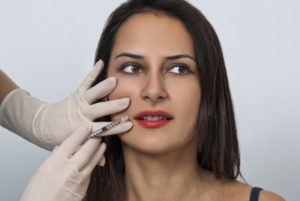The Growth of the Cosmetic Surgery Industry
 Over the past few years one medical service has seen an incredible growth – the likes of which others in the industry simply can’t replicate. This service is cosmetic surgery and although it’s been available to patients for almost half a century now, its true potential has only recently been recognised.
Over the past few years one medical service has seen an incredible growth – the likes of which others in the industry simply can’t replicate. This service is cosmetic surgery and although it’s been available to patients for almost half a century now, its true potential has only recently been recognised.
Most people will wish that they had the means to alter or modify a particular feature on their body, be it facially, a part of their body mass, or even their bone structure. In the past, these options were fairly limited and due to the extensiveness of procedures – not to mention the risk associated, cosmetic surgeries were typically only available to those with the money to fund the procedure.
How have things changed?
Thanks to the latest advances in technology and the wider surgical options now available, these surgeries are now open to people from all walks of life, regardless of the reason behind them needing to undergo a procedure. Plastic surgery has been used to treat damage after a person has suffered an injury, just as frequently as it has assisted those unhappy with their appearance to rectify their causes of concern.
Thousands of Australians undergo procedures on a monthly basis and according to recent research, it was discovered that almost 94% of those patients were satisfied with the results. But what is it that’s led to this sudden popularity and what types of procedures can a person request to undergo?
Plastic surgical procedures in 2016
As briefly mentioned above, cosmetic alterations may now be recognised world-wide, but they have actually been available for decades. Years ago, before doctors and surgeons had access to the types of equipment and facilities that they do now, the range of procedures would have been fairly limited.
The earliest types related to skin grafting, where a patient could choose to have a particular length of skin removed from another part of their body, and then sculpted on to a different region; usually to repair damage. Although quite successful the processes involved were still fairly basic, as were the results. These days skin grafting is still an option, but it is performed in such a way so as to offer optimum results every time (as opposed to past patients having to settle for uneven skin and scarring).
It’s not just grafting that has experienced a great improvement over the decades; there are now dozens of individual surgeries available to patients that would have been unheard of in the past. These include:
- Rhinoplasty (nose surgery)
- Blepharoplasty (eyelid surgery)
- Face lifts
- Body contouring
- Liposuction (the removal of fat from the body via suction device)
- Bone restructuring
- Breast enlargement and reduction
- Body-hair related surgeries
Not only are each of these types of surgery now readily available, they often boast an affordable price tag too – which seems to be lowering as the years’ progress. As with all medical processes there are concerns involved and these will depend on the type of procedure being undertaken. It’s commonly accepted that anaesthetic will need to be used and this is one of the main causes for concern.
Fortunately, medical experts are well versed in the use of drugs and chemicals and so will only ever undertake a procedure once all risks have been minimised. A surgeon will typically discuss these factors with their patient ahead of time, so as to provide a greater level of understanding relating to risks and results.
As of 2016, cosmetic procedures of all types have grown so substantially that they are now recognised as one of the most effective on the planet. As newer techniques are introduced, the entire industry is expected to experience a consistent growth; and one that can benefit people of all ages, regardless of their reason for requiring surgery.